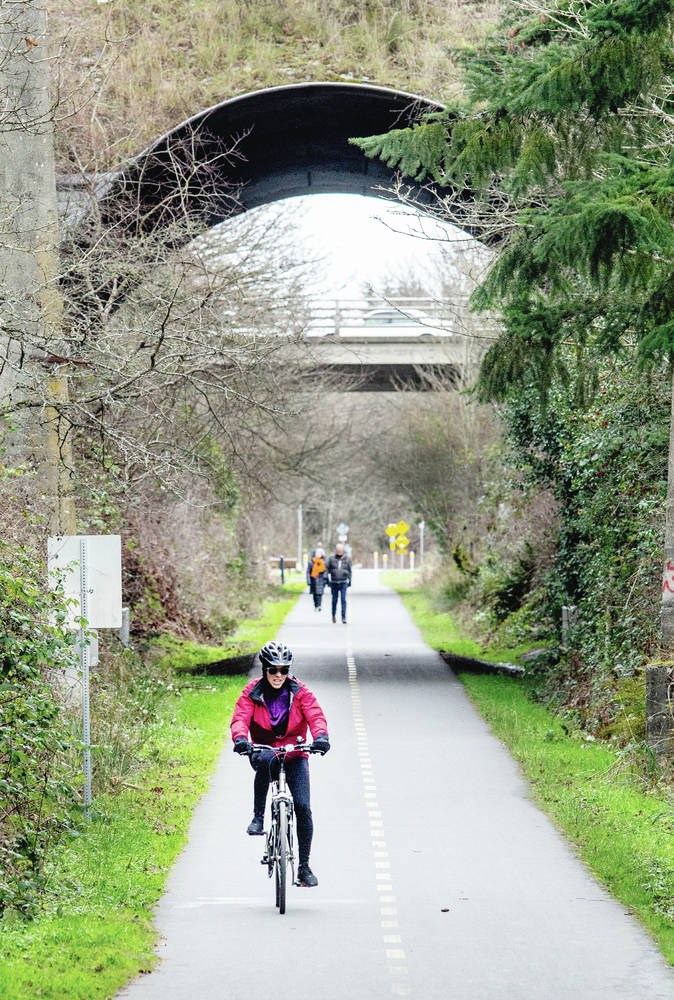The physical health benefits of active transportation (walking, biking, public transit) are well known. Compared to cars, there are fewer emissions of carbon dioxide and various air pollutants per passenger mile, fewer accidents and more physical activity — I often joke that includes running for the bus.
But less attention has been paid to the mental-health impacts of transportation and the benefits of active transportation for mental and social wellbeing.
Some 35 years ago, when leading the Healthy City initiative for the City of Toronto, I gained a fascinating insight into the social role of public transportation. Former Mayor John Sewell, in discussing the TTC (Toronto’s public transit system), described it as “the great democratizer.”
His point was that because it was a well-run, extensive system, everyone used it: young and old, rich and poor, black and white, male and female. And so you had to literally rub shoulders with “the other” all the time. And he felt that helped people learn tolerance, learn how to get on with each other.
Ever since, I have always had an interest in the social implications of transportation. But two recent reports have re-awakened my interest in the mental-health implications.
The first is a March 2021 report on the relationship between transport and mental health prepared for the NZ Transport Agency by a University of Auckland research team. The second – a March 2021 report on Urban Sanity – is from Todd Litman, a local expert who runs the Victoria Transport Policy Institute, although he seems to be far better known internationally than he is locally.
The findings are perhaps not too surprising. The NZ report finds that factors leading to increasing psychological distress in cities include “increased noise pollution and neighbourhood severance, and declining levels of active transport use resulting from a rise in private car use.” The term neighbourhood severance refers to “a decline in social connection and social capital (feelings of trust and belonging within neighbourhoods) due to rising traffic volumes.”
The researchers also found that longer commutes, whether by private car or bus, especially in congested conditions, lead to increased commuter stress. Moreover “transport poverty and inaccessible environments” are likely to cause “psychological distress for low-income households and people living with disability.”
On the other hand, the transport-system conditions that are essential for mental health are “low-cost and accessible … systems that enable people to access essentials such as employment, medical care, food, and social support.” In addition, “high-quality walking (or wheeling) environments that provide opportunities for gentle exercise as well as social interaction in low-stress traffic conditions” are also good for mental health.
Key ways to improve urban mental health through transport policy, the researchers suggest, include improving neighbourhood walkability, reducing long commutes, increasing active commuting and reducing the cost and improving the comfort of public transport.
Todd Litman’s report is on urban mental wellbeing in general, with only one small part of his report focused on transportation. The intent, he writes, is to help us understand how to create saner and happier cities. But he readily acknowledges it is not easy to understand this complex issue.
In part, that is because our understanding of what mental wellbeing is and how to measure it is less than perfect. It is also a challenging area of research, in part because mental and social wellbeing is largely subjective, and varies a great deal. What makes one person happy or stresses them out may not have much effect at all on someone else.
Nonetheless, when it comes to transportation, he concurs with the NZ report, adding that more walking in the neighbourhood adds to community safety because there are more “eyes on the street,” as Jane Jacobs put it. He also notes that a British study found “psychological wellbeing was significantly higher for active-mode commuters than car or public transport users, and for longer duration commutes, particularly driving.”
Litman concludes: “Cities can increase mental health and happiness by improving walking and cycling conditions, and enhancing public transit services, particularly reducing the most uncomfortable conditions such as excessive crowding, heat, and harassment.”
Local politicians, transport-system designers, mental-health professionals and the public should pay attention to these important ideas.
Dr. Trevor Hancock is a retired professor and senior scholar at the University of Victoria’s School of Public Health and Social Policy.



